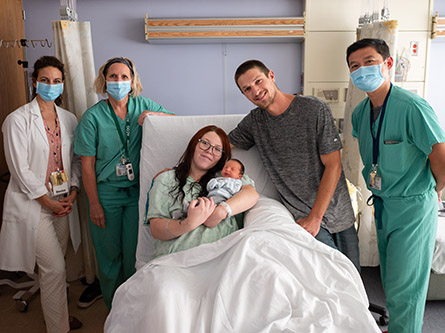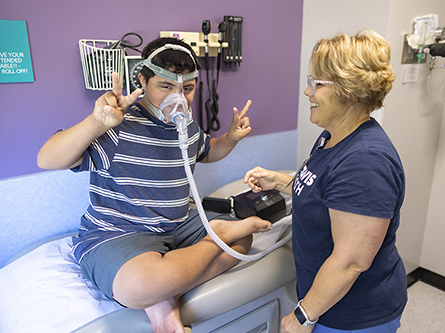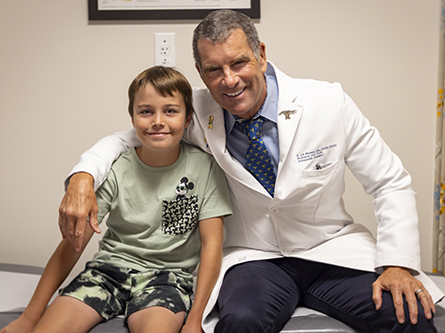
Born with only one functional heart ventricle, Kayla Price always thought that having a baby wasn’t in the cards.
“I was warned by my doctors from the time I was little. I’ve always known the risks,” said Price, who had her first heart surgery for Tricuspid Atresia at 2 days old. She had her second surgery at 6 months old and the third and final surgery at 2 years old. The three stages of open-heart surgery results in a Fontan circulation, which allows Price’s single good ventricle to pump oxygenated blood to her body, while deoxygenated blood bypasses the heart and flows directly to her lungs.
Before the Fontan procedure, most children born with single ventricles would die before their second birthday. These days, the survival rate of these patients has extended through young adulthood and now patients with prior Fontan procedures are interested in trying to have children.
Kayla Price was one of these patients.
She was very excited when she found out that she was pregnant at age 24. It is estimated that fewer than 10 women with Fontan physiology get pregnant and deliver successfully in the United States every year. Since they are so rare, there’s very little quality data on the risks and outcomes of these pregnancies. Most health care providers recommend avoiding pregnancy to minimize risks to the mother and her heart.
Indeed, Kayla’s primary care provider was not so thrilled. He told her that he couldn’t provide care for her. The limited information available suggests many risks: pregnancy loss, arrhythmia that could lead to a heart attack, blood clots, heart failure, preterm delivery with risks of prematurity and postpartum hemorrhage. Her doctor immediately referred her to UC Davis Health for a second opinion.
The UC Davis Health team rose to the challenge. The multidisciplinary team, including maternal-fetal medicine, pediatric cardiology, obstetrics and pediatric cardiac anesthesiology followed her pregnancy carefully.
“There is a big variation in Fontan patients, and some are at higher risk, some are lower risk. It depends on how severe your congenital heart defect is, how well your heart functions and how blue your skin is. The pregnancy risks can vary based on this. In Kayla’s case, her heart was high functioning for a Fontan patient,” said UC Davis pediatric cardiologist Jay Yeh.
Kayla had frequent checkups by Yeh and her maternal-fetal medicine physician Véronique Taché. She had regular obstetric ultrasounds to monitor her developing baby and echocardiograms to monitor her own heart. The team approach at UC Davis Health ensured that her health care providers met regularly about her progress, with the goal of providing excellent patient-centered care to Kayla and her fetus.
Yeh gave her the option to deliver vaginally, but Kayla opted for a scheduled cesarean section. At 38 weeks gestation, Kayla successfully delivered her baby, Brandon, last June. She spent one day in the UC Davis Pediatric and Cardiac Intensive Care Unit for close heart monitoring and then was transferred back to Labor and Delivery.
“Brandon is the best gift! I’ve been so blessed to live to see his beautiful face,” Kayla Price said. “I just want my son to know how special he really is.”





